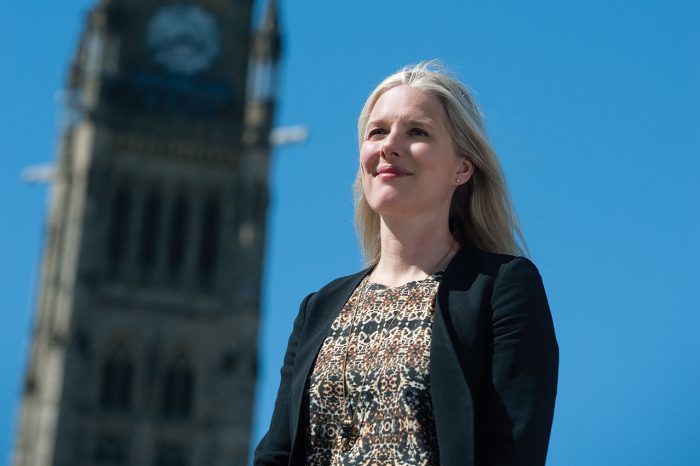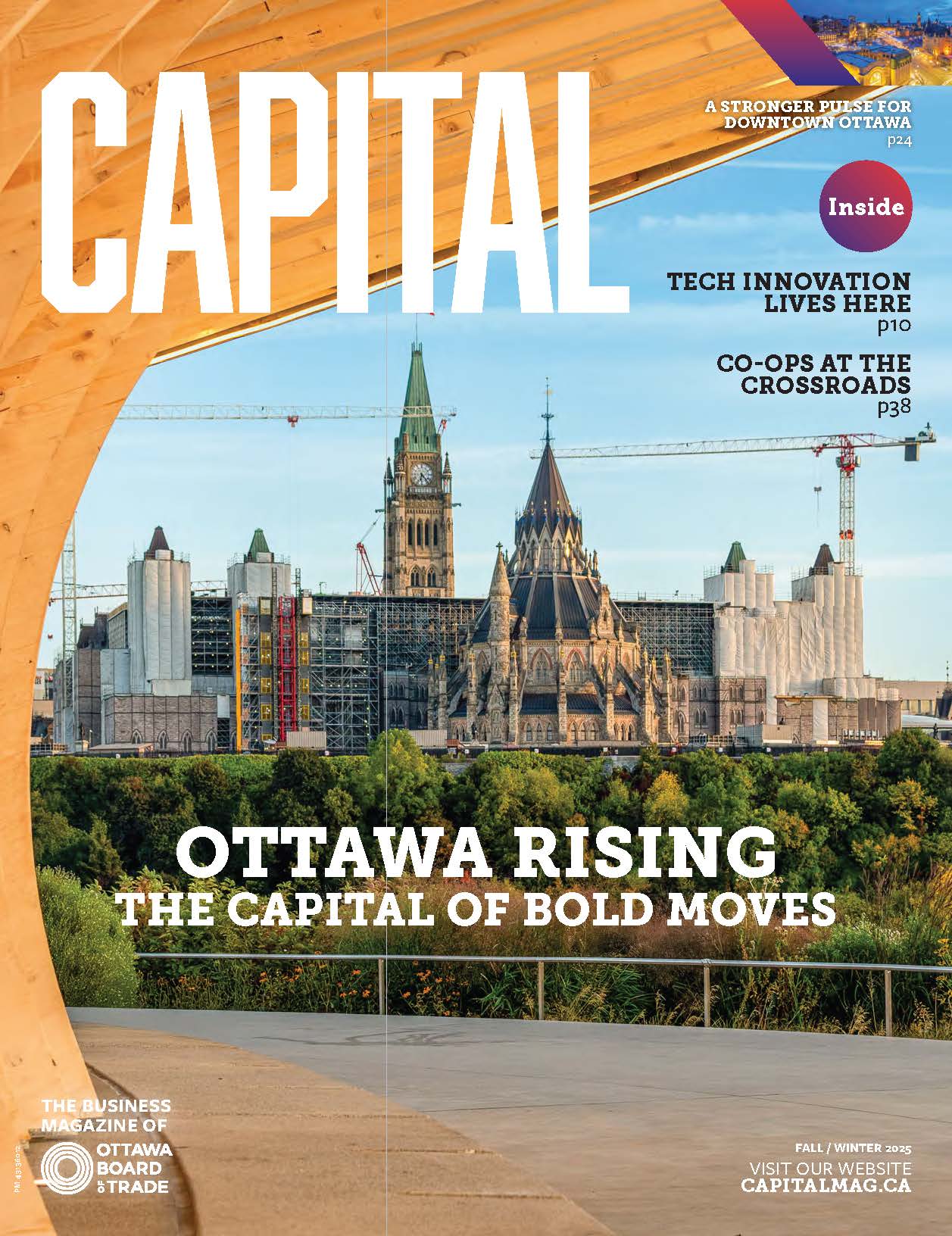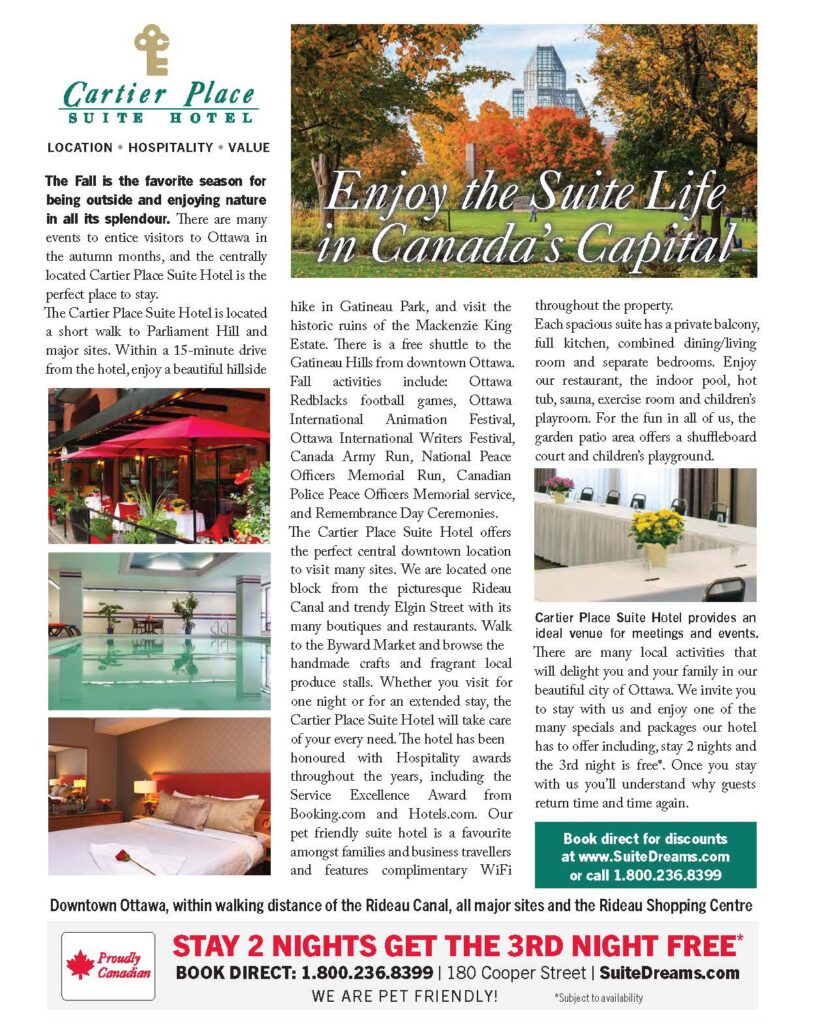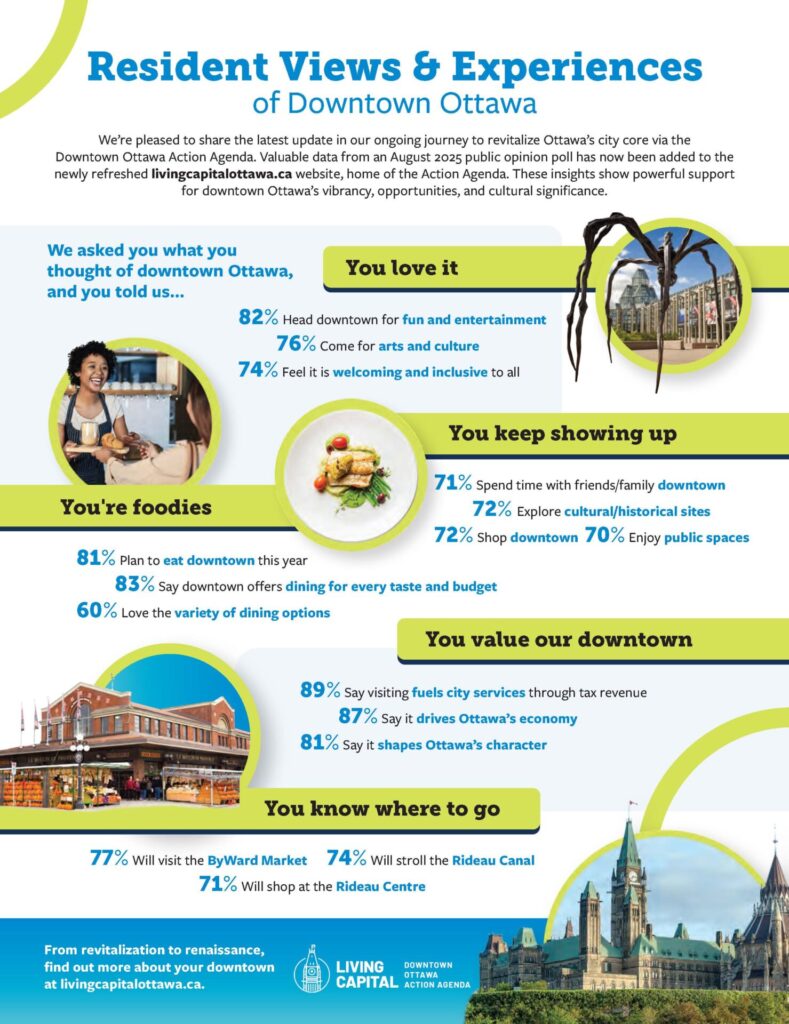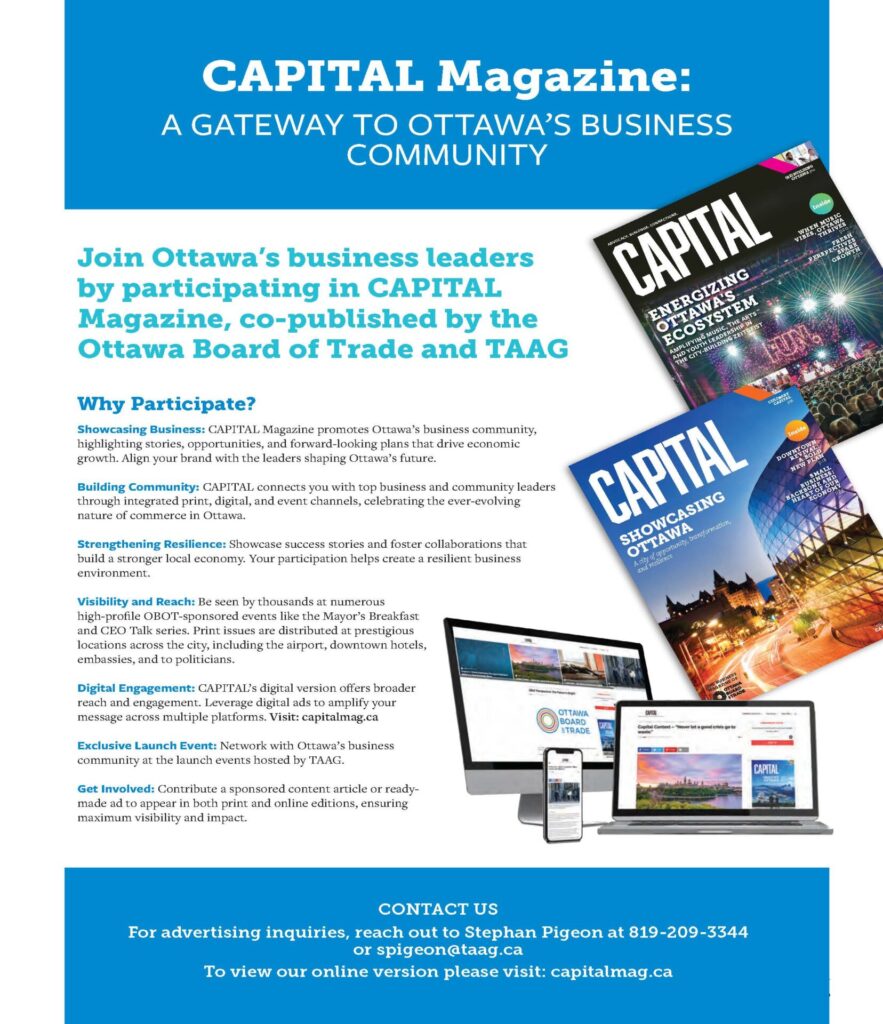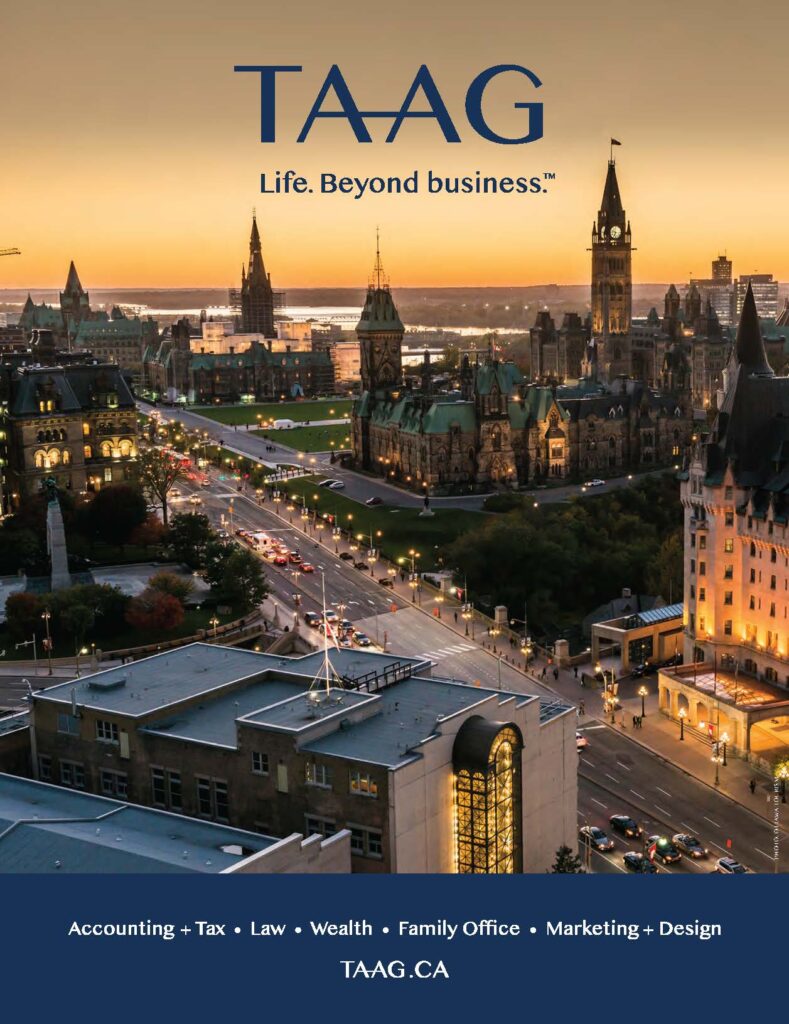Feature – Weekend Warriors or Way of Life?
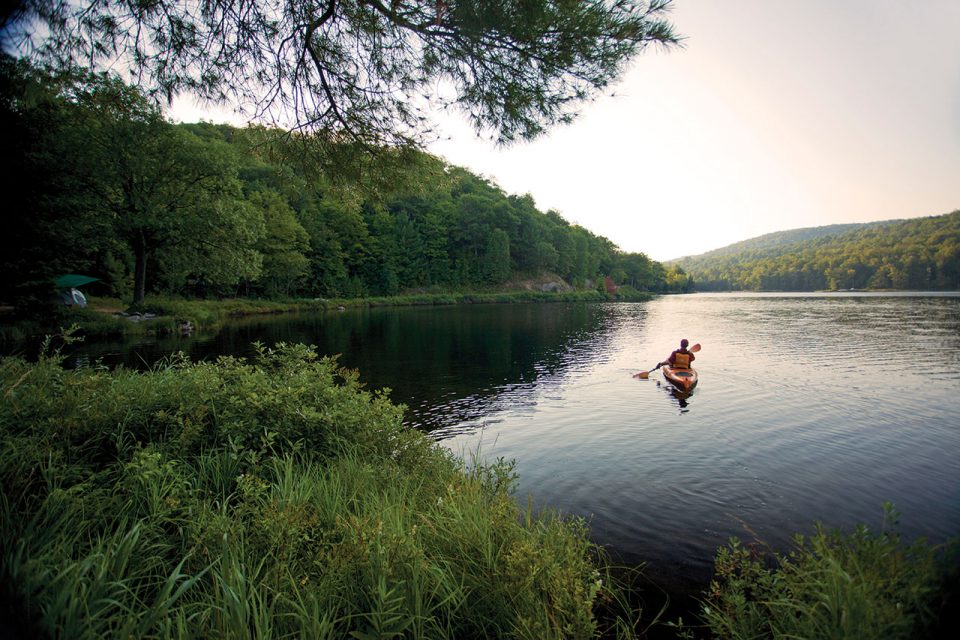
Gatineau Park covers 361 square kilometres of conservation space, just 15 minutes from Parliament Hill.
Ottawa’s access to nature is more than just a luxury—it’s a selling point
by Tamara Micner
In a city with more than 850 parks, 800 kilometres of biking trails and 400 kilometres of cross-country ski trails, you could say that Ottawa has nature right in our house—not just our backyard. Increasingly, it’s a draw that both attracts and retains world-class employees, and businesses are recognizing its value.
This year’s Bike to Work Month, organized by the non-profit EnviroCentre and the City of Ottawa, had a record 200 workplace teams taking part throughout May (up from 170 last year). EnviroCentre notes that cycling is on the rise as a way to commute in Ottawa, with almost three percent of Ottawans now cycling to and from work—one of the highest rates among cities in Canada. And cyclists are one of the fastest-growing road users in the capital.
“Employees are considering choices about commuting in a way that we haven’t seen in previous generations, and employers in Ottawa are taking note of that,”says Angela Plant, program coordinator at EnviroCentre. With the average commute in Ottawa being 29 minutes by car, that adds up to a significant amount: as many as 20 hours per month.
EnviroCentre is advocating for more “complete streets” in the city to encourage more people of varied ages, genders, and abilities to enjoy and take advantage of active transportation options, such as cycling and walking.
With many Ottawans living within five to 10 kilometres of their workplace, active transportation is well within reach—and desirable—for many employees.
“Businesses are often shocked at how many of their employees that covers,” Plant says of the five-kilometre radius.
She adds that, in addition to decreasing a business’s carbon footprint, active transportation boosts employees’ productivity and morale. “From an employer’s perspective, there are multiple wins associated with encouraging active transportation,” she says.
“There are a lot of employers in the region who realize how important active transportation is to employee attraction and retention. Especially for a younger workforce, we know that these are priorities.”
She also notes that encouraging carpooling as another alternative mode of transportation facilitates social connections among employees. Outside commuting hours, Ottawa’s green spaces are also a key asset that make people want to live and work here, whether it’s traversing the Greenbelt or Gatineau Park.
Both overseen by the National Capital Commission (NCC), the Greenbelt is the largest publicly owned, urban open land area in the world, and Gatineau Park sees 2.65 million visits every year with a satisfaction rating of 98 percent.
Christie Spence, director of Québec’s Urban Lands and Gatineau Park at the NCC, says that among her team at work and the people they speak to, the access to nature that’s available in Ottawa, and the quality of life that creates, is a major reason that people move here and stay. She herself moved back to Ottawa, after living in Vancouver and the Yukon, partly because of the access to green space and outdoor recreation. The NCC’s office in Chelsea borders Gatineau Park, and she can see birds and groundhogs outside her office window.
“People will say that they came to this region in part to experience that, and those who are here really, really use it intensively and value it,” she says.“We always have requests for more bike paths, more routes, more trails, more activities within the park, and winter trails” to encourage sustainable transportation in winter, she adds.
“I know that’s a draw for my team as well, to be able to work in the park, to be able to have these sort of lifestyle opportunities, to live close to where they work: all those things are very valuable to them,” she says.
Businesses such as Ottawa City Rafting—a sister company of Wilderness Tours, located about 1.5 hours from the city—have also seized on opportunities to capitalize on the city’s natural environment. The company, which offers rafting tours on the Ottawa River just steps away from downtown at Britannia Beach, won the 2015 Ottawa Tourism Best New Business Award.
Jim Antonakos, operations manager at Ottawa City Rafting, believes we should be proud of the city’s waterways and natural wonders.
“People in Ottawa don’t realize the outdoor mecca we live around,” he says, whether it comes to mountain biking, skiing, sea kayaking or rock climbing. “We don’t know how lucky we are.”
Tamara Micner is a Canadian journalist and playwright, and former Google communications specialist, based in London, England.
Environment and Health Go Hand-in-Hand
By Alison Larabie Chase

People spend a significant amount of their waking life at their jobs, which take place in a variety of locations including office buildings, factories, hospitals, schools, labs, and other institutions. But many of us never consider how our physical workplace environment might be affecting our health. Sarah Young, program and outreach coordinator at the Ottawa Integrative Cancer Centre (OICC), says the effect of an individual’s environment on their health and cancer risk can be significant.
“From the research we’ve done, there are a number of links between one’s lifetime exposure to certain chemicals in our environment and disease,” says Young. “It’s not only exhaust from vehicles and industrial pollution; we are being affected and potentially harmed by products, including personal care and household cleaners.”
To further their work between these links, the OICC is opening a new wing this fall that will focus on environmental health.
What can an employer do to mitigate these issues? For one, they can mandate the use of all-natural cleaning products in the workplace. “Be aware of the benefits of reduced chemicals coming into the space,” she says. “We’re surrounded by thousands of different chemicals that are used on a daily basis in all the products we buy and consume.”
The air employees breathe is another potential risk factor. “In Ottawa we have a lot of people working in older buildings where the air quality is bad,” she adds. “If an employer can retrofit their space to improve air flow and quality, that would be amazing.”
She also suggests providing carbon-filtered drinking water, offering wellness programs such as yoga classes, and encouraging people to get outside and move more.
The OICC offers a workshop to help people become informed when buying personal care and cleaning products, and Young encourages companies to participate. For more information, visit www.oicc.ca.


